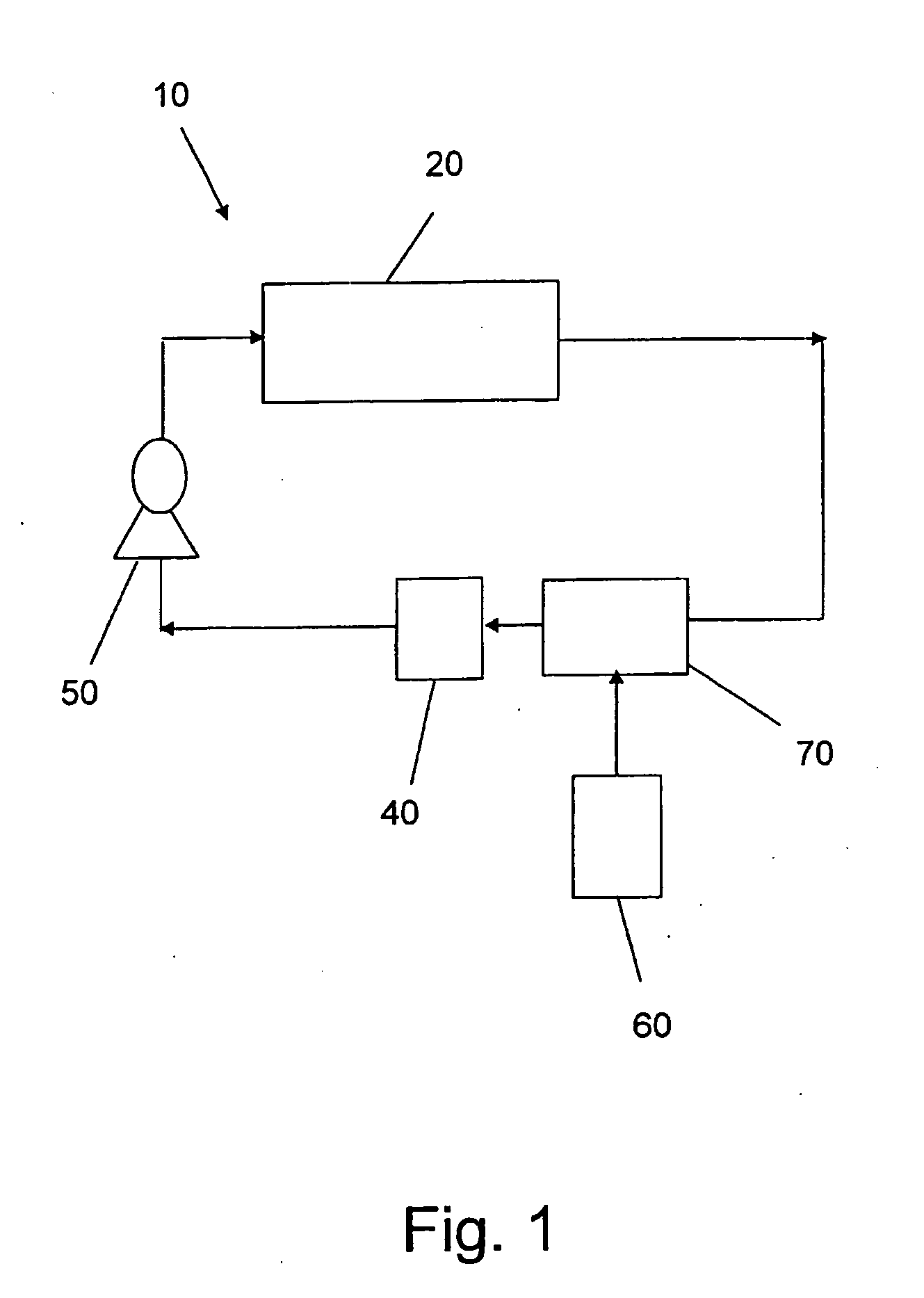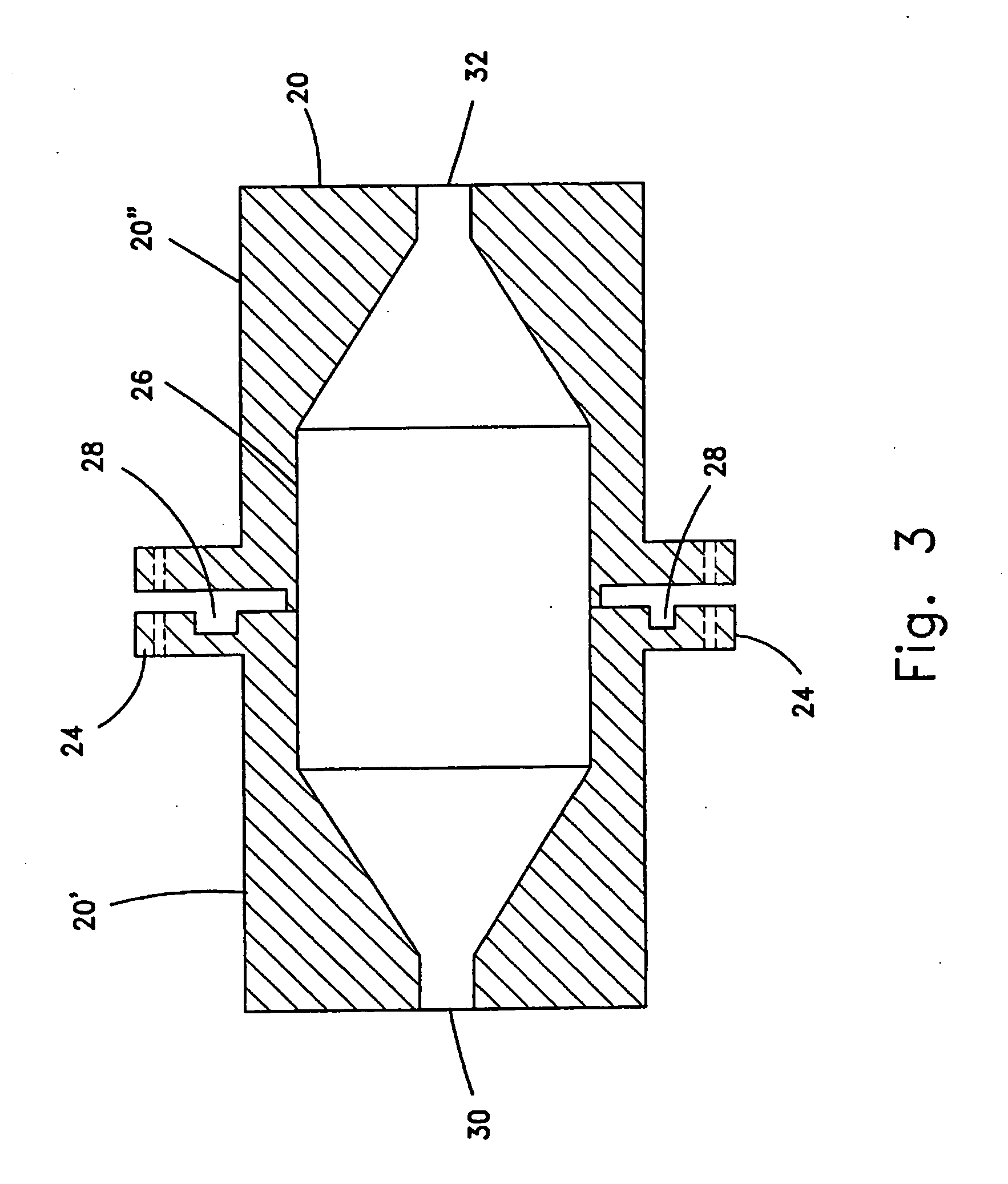Pulse-medium perfusion bioreactor with improved mass transport for multiple-3-d cell constructs
a technology of mass transport and micro-perfusion, which is applied in the field of three-dimensional (3d) cell culture, can solve the problems of large mass transport requirements of cultivation of 3-d tissue constructs, lack of vascular network of normal vascularized tissues, and limitations when used for other tissue engineering applications
- Summary
- Abstract
- Description
- Claims
- Application Information
AI Technical Summary
Benefits of technology
Problems solved by technology
Method used
Image
Examples
example 1
Proof of Medium Perfusion in the Bioreactor of the Present Invention
[0104] The ability of the medium to perfuse into the cell constructs in the bioreactor of the present invention was investigated by following the distribution of 5-carboxyfluorescein (CF) (Sigma, Israel) in alginate cell constructs with the following dimensions, 5 mm×2 mm, d×h. Perfusion was achieved using a peristaltic pump, which pumped the medium at a rate of 150 ml / min. Cell constructs placed in a bioreactor under static conditions (i.e. with no medium flow) as well as in the bioreactor of the present invention were supplemented with a medium containing 0.5% (w / v) CF. After 1 minute, the cell constructs were harvested, frozen and longitudinally sliced to 0.5 mm thick slices. The slices were viewed under a fluorescent microscope and photographed (FIG. 8). There is clear evidence that mass transport in cell constructs subjected to a perfused medium is higher than in cell constructs cultivated in static medium.
example 2
Effect of the Bioreactor System of the Present Invention on Cardiac Cell Viability
[0105] Alginate cell constructs (5 mm×2 mm, dia.×thickness) seeded with cardiac cells (7×105 cells / construct) were cultivated within the bioreactor of the present invention for 8 days. The alginate scaffold of the alginate cell construct was prepared as described in WO97 / 44070 [see also Zmora, S. et al., Tailoring the pore architecture in 3-D alginate scaffolds by controlling the freezing regime during fabrication. Biomaterials (2002), 23(20), 4087-4094]. Samples (n=2-3 per data point) were taken every 2 days and MTT (Biological Industries, Israel) and Hoechst 33258 (Sigma, Israel) assays were performed to determine metabolic activity and DNA content. The results shown in the graph of FIG. 9, wherein the x-axis shows time in units of days in the culture, and the y-axis shows the metabolic activity and DNA content in relation to day-0, show high maintenance of over 90% of the initial cell number. Trian...
example 3
Metabolic Indices of Medium in the Bioreactor System of the Present Invention
[0108] A 0.5 ml CM+ medium from the bioreactor system of the present invention was sampled each day and analyzed for glucose and lactate using a gas blood analyzer. The graph in FIG. 11 shows the yield of lactate on glucose (YL / G) (y-axis), calculated as a molar ratio of the produced lactate and utilized glucose over time (x-axis) in terms of days. The ratio reveals aerobic cell metabolism. The values were calculated as molar ratios of produced lactate and utilized glucose.
PUM
| Property | Measurement | Unit |
|---|---|---|
| diameter | aaaaa | aaaaa |
| diameter | aaaaa | aaaaa |
| distance | aaaaa | aaaaa |
Abstract
Description
Claims
Application Information
 Login to View More
Login to View More - R&D
- Intellectual Property
- Life Sciences
- Materials
- Tech Scout
- Unparalleled Data Quality
- Higher Quality Content
- 60% Fewer Hallucinations
Browse by: Latest US Patents, China's latest patents, Technical Efficacy Thesaurus, Application Domain, Technology Topic, Popular Technical Reports.
© 2025 PatSnap. All rights reserved.Legal|Privacy policy|Modern Slavery Act Transparency Statement|Sitemap|About US| Contact US: help@patsnap.com



